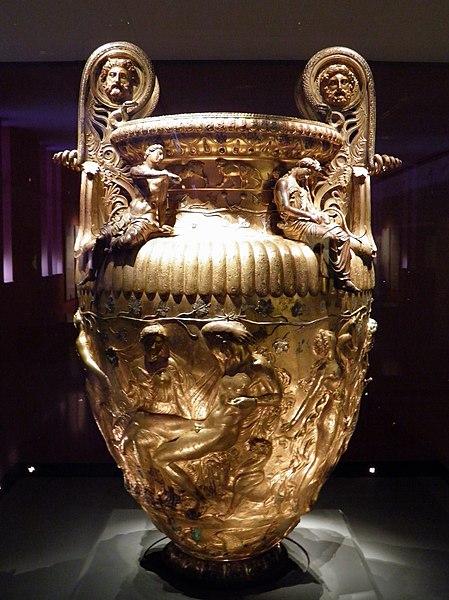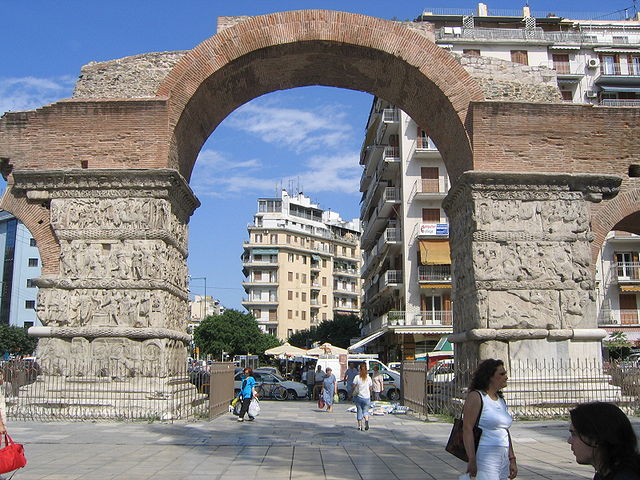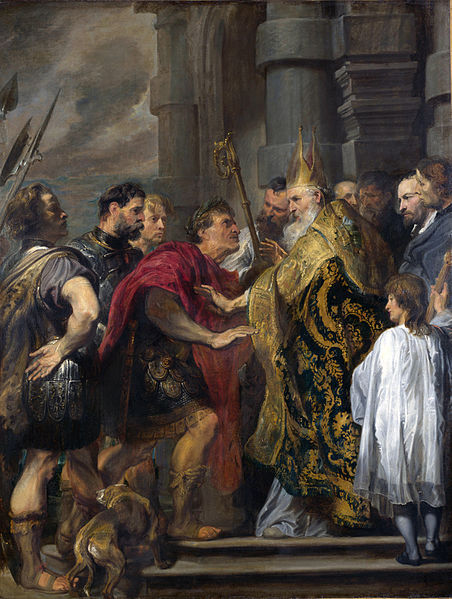The history of the city of Thessaloniki dates back to the ancient Macedonians. Today with the opening of borders in Southeastern Europe it is currently experiencing a strong revival, serving as the prime port for the northern Greek regions of Macedonia and Thrace, as well as for the whole of Southeastern Europe.
Coin depicting Cassander, founder of Thessalonica
Macedonian-era crater at the Archaeological Museum of Thessaloniki
The Arch of Galerius on Egnatia Street
Saints Cyril and Methodius
The Massacre of Thessalonica in Macedonia, Greece was a massacre of local civilians by Roman troops which is believed to have occurred around 390. According to Sozomen, in June of that year Butheric, a Roman general stationed in Thessalonica as a magister militum was lynched in an urban riot by an angry mob in the circus after having a famous circus charioteer arrested for pederasty, and refusing the people's demand for his release, although, this is found in only one source. In response, Theodosius authorized his Gothic soldiers to punish the people of the city resulting in the killing of a large number of citizens when they were assembled in the city's hippodrome.
Massacre in the Hippodrome of Thessaloniki in 390, 16th-century wood engraving
The Palace of Galerius in Thessaloniki (Navarinou Square), near the Hippodromus, where the massacre allegedly took place.
Anthonis Van Dyke's 1619 painting of St. Ambrose blocking the cathedral door, refusing Theodosius' admittance. Saint Ambrose barring Theodosius from Milan Cathedral







